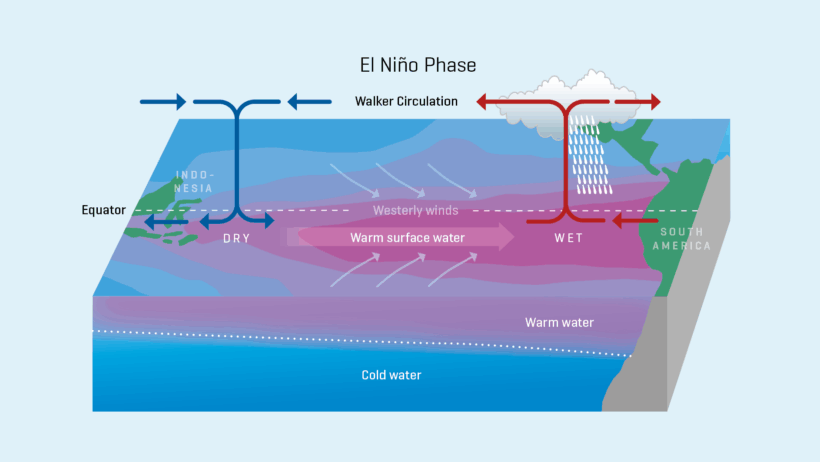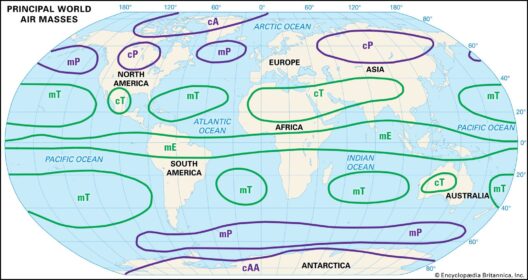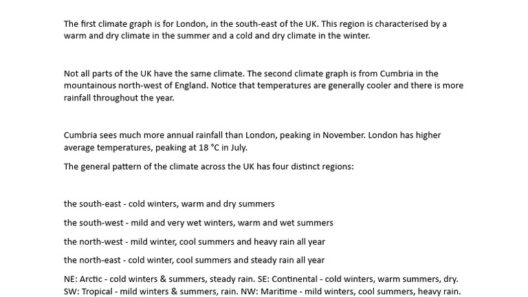El Niño is a complex climatic phenomenon that captivates scientists and the public alike. Its effects on global weather patterns, ecological systems, and economies make it a subject of significant interest. Understanding El Niño requires not only a grasp of its mechanics but also an appreciation for its widespread implications.
At the heart of El Niño lies the interaction between oceanic conditions and atmospheric phenomena in the tropical Pacific. Typically, trade winds blow from east to west along the equator, pushing warm surface waters toward the western Pacific. However, during an El Niño event, these trade winds weaken, allowing warm water to move eastward. This shift triggers a cascade of climatic changes that can have far-reaching effects.
Climate scientists utilize sea surface temperature anomalies to identify the onset of El Niño. Anomalously warm surface temperatures, surpassing 0.5 degrees Celsius above the historical average, can signal the beginning of this phenomenon. Such warmth alters atmospheric pressure patterns across the Pacific, leading to abnormal weather conditions worldwide.
The profound impact of El Niño on precipitation patterns is particularly noteworthy. The eastern Pacific, typically characterized by drier conditions, may experience increased rainfall, while parts of Indonesia and Australia might suffer from droughts. These changes in precipitation are not isolated; they may induce floods in some regions while exacerbating water scarcity in others. The ramifications for agriculture, water supply, and ecosystems are immense.
Moreover, the connection between El Niño and hurricanes has captivated meteorologists. The phenomenon tends to suppress hurricane activity in the Atlantic basin while potentially enhancing cyclonic activity in the eastern Pacific. The shift in atmospheric conditions often results in more favorable development for storms, influencing NAO (North Atlantic Oscillation) and MJO (Madden-Julian Oscillation), which subsequently affect cyclogenesis rates. These interactions enforce the necessity of monitoring El Niño’s behavior, particularly during the hurricane season.
The effects of El Niño extend beyond immediate weather outcomes. It has significant implications for marine ecosystems as well. The warming of surface waters can disrupt fish migration patterns and spawn die-offs, impacting multiple levels of the marine food web. Fishermen frequently note declines in certain fish populations during El Niño years, emphasizing its role in altering human livelihoods dependent on marine resources.
Additionally, the ramifications of El Niño can activate complex social and economic dynamics. Regionally, areas hardest hit by adverse climatic conditions may endure food crises due to crop failures, potentially leading to increases in food prices and subsequent socioeconomic instability. Human health can also be jeopardized as diseases may proliferate in altered climates, creating new challenges for public health systems.
El Niño’s impacts are not limited to isolated events or localized effects. The phenomenon has been linked to longer-term climate variations, providing clues to understanding global climate change. The interplay between El Niño and underlying shifts in ocean currents fuels ongoing research into climate modeling. Scientists seek to delineate how these oscillations interact with anthropogenic climate change, which may heighten or alter El Niño events in the coming years.
Evidence suggests that climate change may be unveiling some idiosyncrasies in the behavior of El Niño. Specifically, researchers have observed a possible increase in the intensity and frequency of strong El Niño events, which could create even more severe weather outcomes. This connection is critical: as global temperatures continue to rise, the ability to predict and mitigate the consequences of El Niño will be paramount.
A key area of research explores the teleconnections that arise from El Niño. Teleconnections refer to the climatic influence that El Niño exerts on regions far removed from the Pacific, such as North America and Europe. From atmospheric waves to altered storm tracks, the ripples of El Niño can dictate the weather experienced thousands of miles away, engendering varied impacts such as winter weather variations and the modulation of precipitation patterns.
Furthermore, indigenous communities and vulnerable populations are often the most susceptible to the adverse impacts of El Niño. Limited resources and adaptive capacities can exacerbate the challenges faced during an El Niño event, amplifying the existing socio-economic divides. Efforts to build resilience are vital in these contexts, involving education, resource management, and community engagement.
The fascination with El Niño is rooted in its multifaceted nature and the lingering mysteries it presents. With ongoing research and technological advancements, we move closer to untangling the complexities of this phenomenon. Understanding how El Niño operates and interacts with global climate dynamics is essential for fostering awareness and informing policy responses to mitigate its impacts.
In conclusion, El Niño serves as a symbol of the intricate interconnectedness of our planet’s climate system. Its influence can be felt across continents and cultures, reflecting our shared vulnerability to climatic aberrations. By delving into the mechanics and impacts of El Niño, we not only unravel an intriguing climatic phenomenon but also confront the broader implications of climate change that loom on the horizon.







